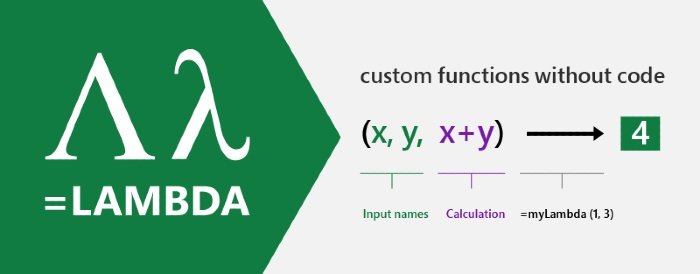Excel formulas have been around for quite some time now. Every once in a while, Microsoft Excel rolls out new formulas and updates the existing ones. Recently, Microsoft has announced something that would change the way people build formulas on Excel sheets. According to Microsoft, Excel users will have an option to use the familiar Excel formula language to create reusable functions.

Microsoft announces LAMBDA for Excel
Well, Excel has had support for custom functions in the past, but the users had to input a JavaScript code. Thanks to the launch of LAMBDA, well, it will no longer be necessary.
“We are releasing to our Beta customers a new capability that will revolutionize how you build formulas in Excel. Excel formulas are the world’s most widely used programming language, yet one of the more basic principles in programming has been missing, and that is the ability to use the formula language to define your own re-usable functions,” Microsoft said.
Instead, users can use the usual Excel formula language to custom-create a function. The deployment capabilities of these Excel-made functions would be quite powerful since one function can call another. Microsoft says that this new feature will change the way people use Excel, especially if the user has some coding background.
Excel users can easily save formulas and convert them into a function. After this point, merely calling for the function on any other part of the sheet will launch the formula.
Microsoft demonstrates how it could be used. For instance, LAMBDA brings the ability to use a set of logic options at a preset interval. If you want to remove some special characters from a group of strings, but dynamically, you can create a =REPLACECHARS function using LAMBDA. After this, you will have to change the variables to get the desired result. Microsoft admits Excel has been missing this functionality for years now.
Besides, Microsoft has included options that allow the smooth management of LAMBDA functions. You will be able to handle multiple formulas and functions that you have used in a workbook.
Developers believe it will increase Microsoft Excel and programming horizons to a great extent, allowing customers to perform necessary calculations and functions without leaving the Excel interface.
Read: How to insert Formulas and Functions in Microsoft Excel.
Leave a Reply